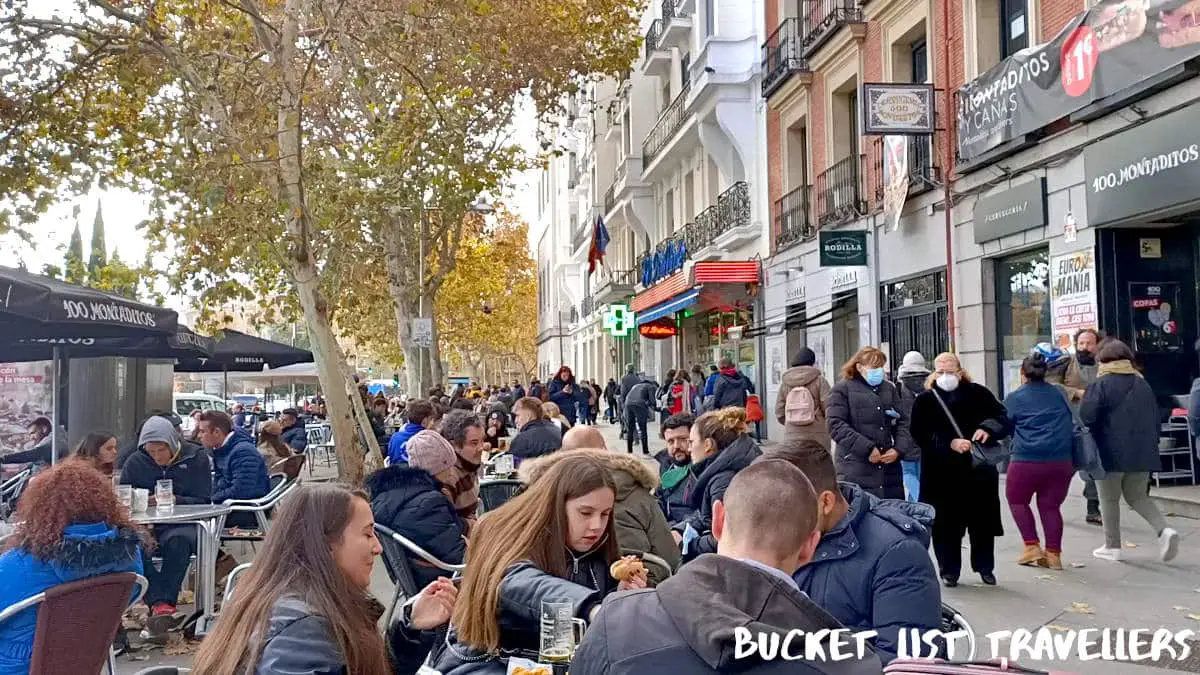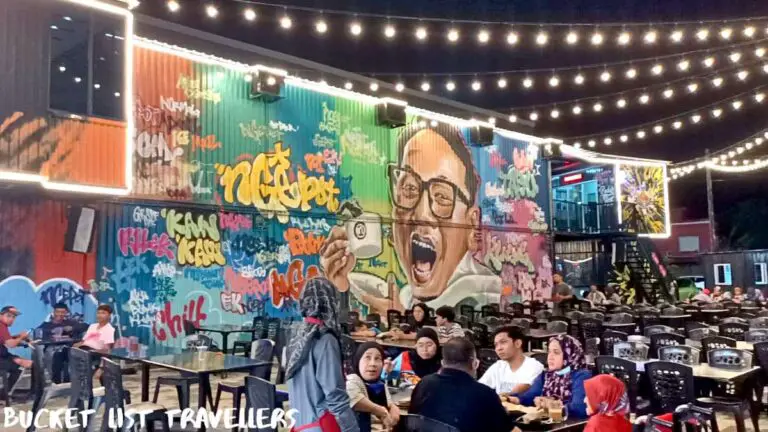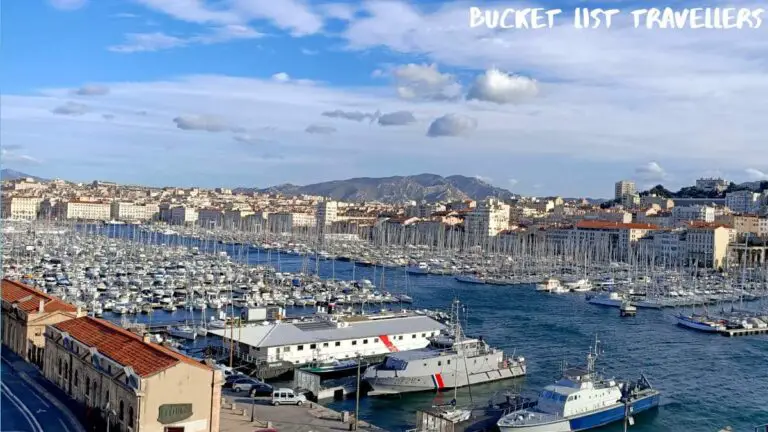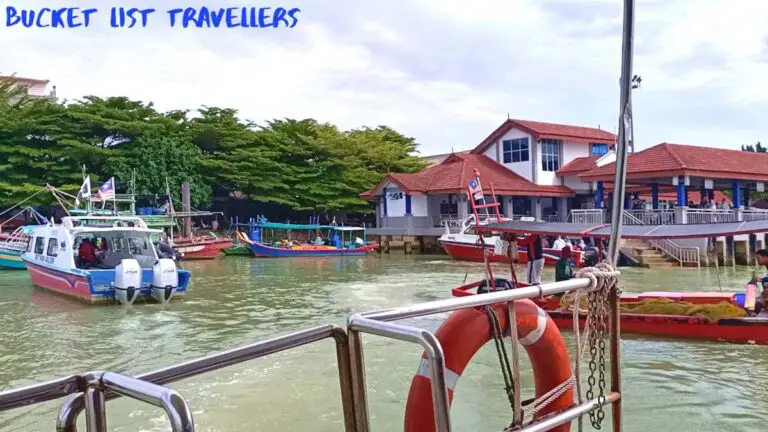Spain’s capital has everything you could want in a city. Madrid is a lively city with a world class food scene, excellent museums, galleries and attractions as well as plenty of events throughout the year. You’ll also be pleasantly surprised at how affordable Madrid is. In this Madrid destination guide we’ll share what you need to know to plan the ultimate Madrid vacation.
Short on time? Here are our Madrid Spain top recommendations:
Highlights: discover Madrid’s world class museums and galleries including Prado Museum and Museo Nacional Centro de Arte Reina Sofía,
devour delicious tapas to your hearts content and then work it off with a promenade through Parque Madrid Río.
Activities: book your Madrid Spain Tours with Get Your Guide.
Accommodation: we use Booking.com to find the best hotels.
Transport: TrainLine for trains and FlixBus for intercity buses.
Car Hire: for great value car rental in Spain we recommend Localrent.com
Flights: find cheapest flights with cashback on WayAway.
Airport Lounge Access: start your holiday the right way with Priority Pass.
Travel Medical Insurance: SafetyWing Nomad Insurance is the ideal choice for long-term travellers and digital nomads.
What is Madrid Spain known for?
Madrid is the capital of Spain and is known for its traditional Spanish cuisine. It is home to the oldest restaurant in the world and is a cultural centre full of historic buildings such as the Royal Palace of Madrid. Madrid also boasts many fascinating museums and art galleries. Additionally, it is known for traditional Spanish pastimes such as Flamenco dancing and bullfighting. The Real Madrid soccer club is based in Madrid. With a population of over 3 million people, Madrid is the most populous city in Spain and contains Kilometre Zero – the starting point of every road in Spain.
Why you should visit Madrid Spain

Madrid is the perfect introduction to Spain. The city is ideal for foodies looking for a gastronomic getaway as there are so many tapas bars, restaurants and cafes to explore. One thing we found particularly impressive about Madrid is its superb selection of galleries and museums – many of which offer free entry at certain times of day. Madrid is also a very walkable city, with wide promenades, leafy parks and gorgeous buildings to admire at every turn. Some of our favourite walking areas include the Royal of Madrid, Puerta del Sol and Parque de El Retiro. Another great thing about Madrid is that it is so well connected to other parts of Spain, which makes it a great launchpad for exploring the country.
Madrid Destination Guide: Know before you go
Basic info about Madrid Spain
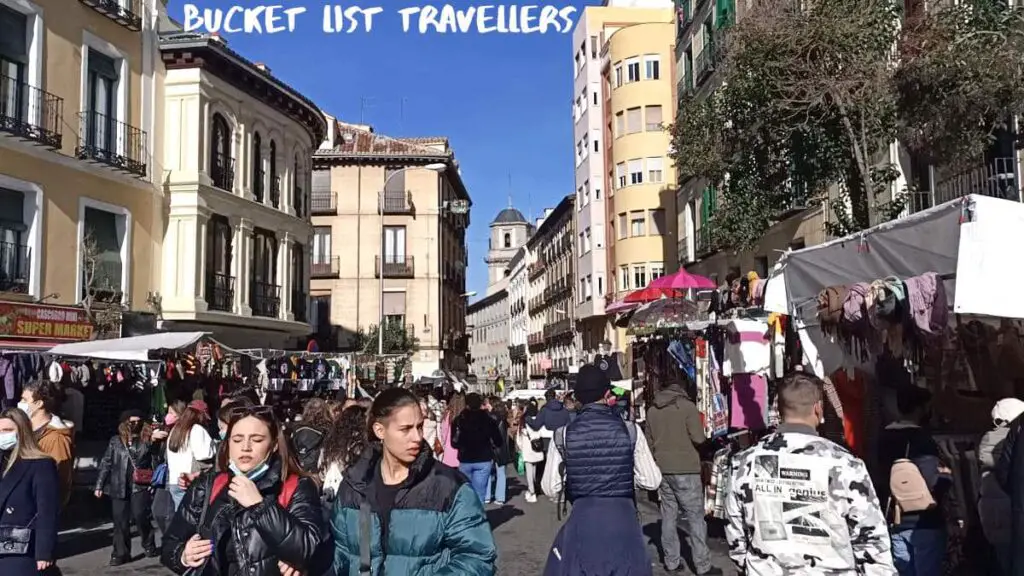
- Language – Spanish. English is widely spoken throughout the country, but not everyone you meet will be able to speak English. Catalan is also the co-official language of three autonomous communities in eastern Spain: Catalonia, the Valencian Community, and the Balearic Islands.
- Currency – euro (EUR). This has been the official currency of Spain since 1999. Currency exchanges can be found in most cities and ATMs are available widely throughout the country.
- Population – 3.223 million (2018)
- Area – 604.3 km2 (233.3 sq mi)
- Autonomous Community – Community of Madrid
- Emergency number – 112
- Police number – 091
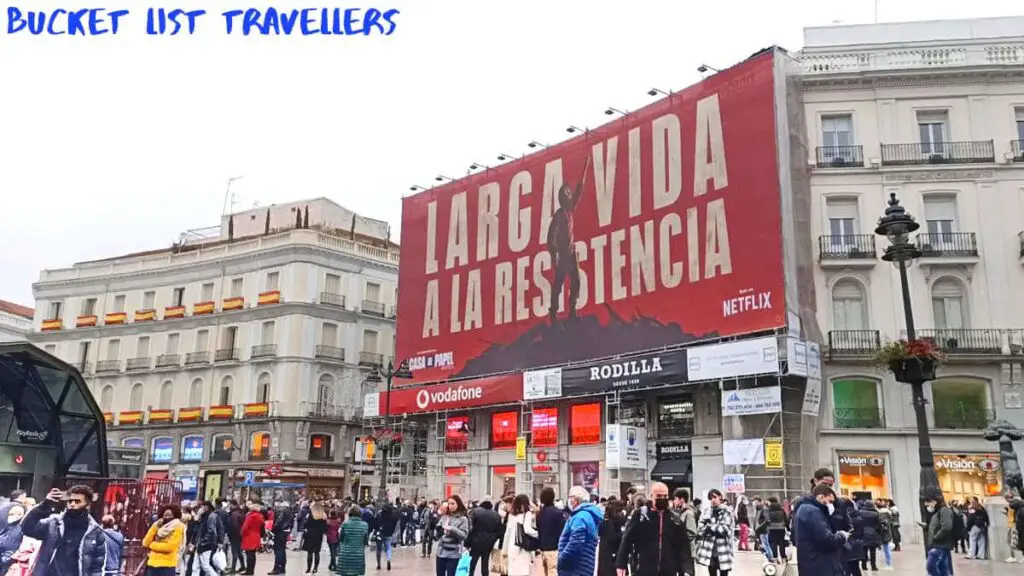
Utilities in Madrid Spain
- Electricity – Spain uses Types C and E power plugs. The country operates on a 230v supply voltage at 50Hz. Power outages are not common in Spain.
- Water – the tap water in Spain is safe to drink almost everywhere in the country. However old pipes may lead to some contamination in the water. Additionally the water may taste different to what you are used to. If in doubt ask your accommodation.
- Toilets – sit-down flushing toilets are the most common type of toilet in Spain. You can flush your toilet paper directly into the toilet in most places. However on islands, mountain areas and more remote places the plumbing may not be able to handle toilet paper and you may need to use a bin provided instead. Public toilets are not common in Spain, but are available in bars and restaurants for free. Some bars and restaurants only allow customers to use their toilets – ask if in doubt. The public toilets that are available usually cost 10-50 cents to use.
- Telephone country code: +34
Where is Madrid Spain?
Madrid is the capital of the Community of Madrid in the centre of the Iberian Peninsula as well as the Central Plateau (Meseta Central). It is an inland city in the heart of Spain.
The closest major Spanish cities to Madrid are Guadalajara, Sergovia as well as Toledo. Madrid is 1 hour by train from Guadalajara and 1.5 hours by train from Sergovia and Toledo.
How to get to Madrid Spain
Madrid destination guide: Arriving by land
Madrid Spain intercity land transport
The main transport options for travelling overland to Madrid Spain are:
- Private vehicle
- Private transport operator
- Train
- Shuttle
- Bus
- Bike
Driving to Madrid from within Spain
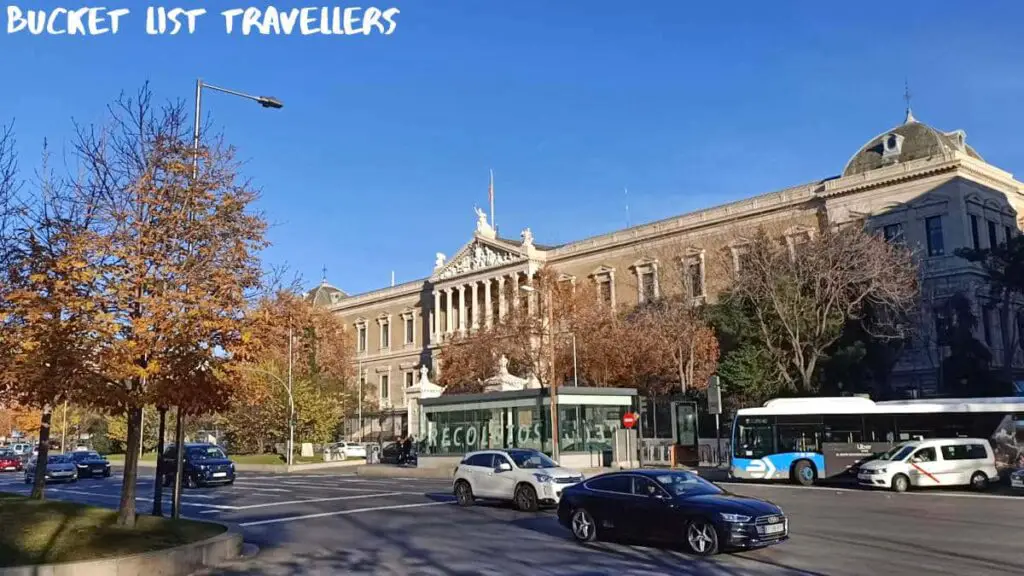
If you are driving to Madrid from within Spain, here are the travel times and distances:
- Toledo – 54 minutes (74km, 46miles) without tolls
- Valladolid – 2 hours 18 minutes (213km, 132miles) with tolls or 2 hours 32 minutes (215km, 134miles) without tolls
- Zaragoza – 3 hours 32 minutes (322km, 200miles) without tolls
- Valencia – 3 hours 42 minutes (356km, 221miles) without tolls
Intercity trains to Madrid Spain
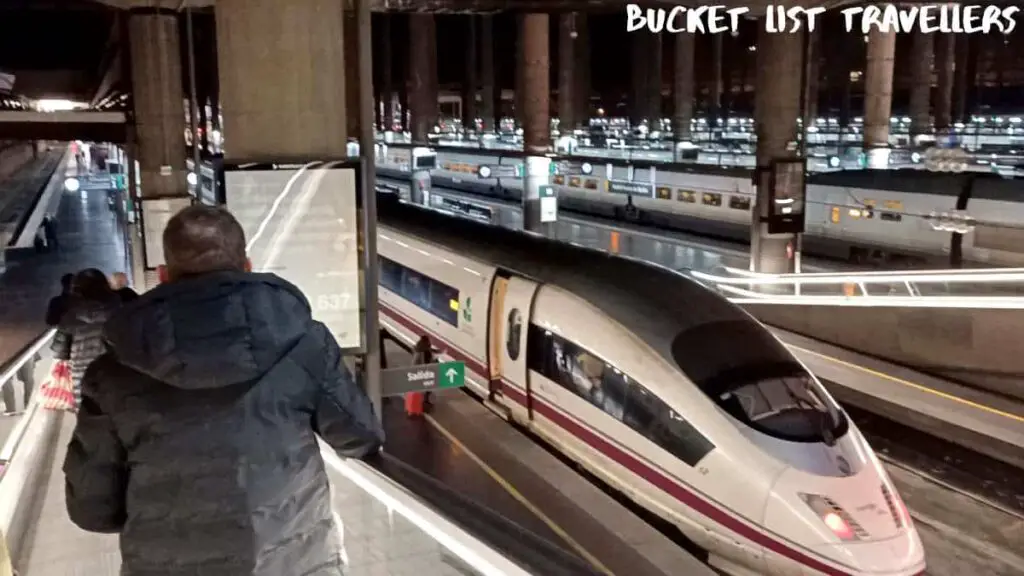
Trains are a cheap and efficient way to get to Madrid Spain. There are 2 main train stations in Madrid. The largest train station in Madrid is Madrid Atocha train station (Estación Madrid – Puerta de Atocha). This is located in the south of Madrid. The other main train station in Madrid is Madrid Chamartín train station (Estación de Madrid-Chamartín Clara Campoamor), in the north of the city.
The following train brands service Madrid:
- AVE (Alta Velocidad Española) trains – this is Spain’s intercity high speed rail service.
- Avant trains – Avant trains share the same high-speed lines as the AVE trains, but are for shorter (media distancia) journeys.
- Alvia trains – these are long distance high speed trains which connect various major cities in Spain.
- Intercity trains – this is a non-high speed rail service which operates on the ‘classic’ rail network in Spain.
- Altaria trains – these are Spains fast long-distance trains.
- Talgo trains
- Media distancia trains – these are medium distance trains that operate in Spain. They are faster than regional trains but don’t use high speed rail lines.
- Tourist trains – a number of vintage tourist trains operate from Madrid, offering a unique way to experience more of the country.
- Cercanías Madrid trains – this is Madrid’s commuter rail service which connects Madrid and its metropolitan area.
The Spanish national railway company that operates these services is called RENFE (Red Nacional de Ferrocarriles Españoles or National Network of Spanish Railways).
We recommend using the app and website TrainLine to book intercity train tickets in Spain. This is the app we use to book trains in Europe. It is very easy to use with great functionality. Another great feature is that you can see days ahead to see what times of the day were the cheapest rates.
Intercity buses to Madrid Spain
A common way to get around Spain is by using intercity buses. These are a budget friendly alternative to trains, but are generally a slower option. Intercity bus companies in Spain include Alsa, SAMAR, Avanza, FlixBus and Blablacar bus. Popular bus destinations from Madrid include:
- Barcelona Spain – travel time 7.5-8 hours. Tickets start from 38 euro one way.
- Zaragoza Spain – travel time 3.5-4 hours. Tickets start from 21 euro one way.
- Benidorm Spain – travel time 5.5-6.5 hours. Tickets start from 40 euro one way.
- Alicante Spain – travel time 4.5-6 hours. Tickets start from 37 euro one way.
- Seville Spain – travel time 6-7 hours. Tickets start from 43 euro one way.
Madrid destination guide: Arriving by air
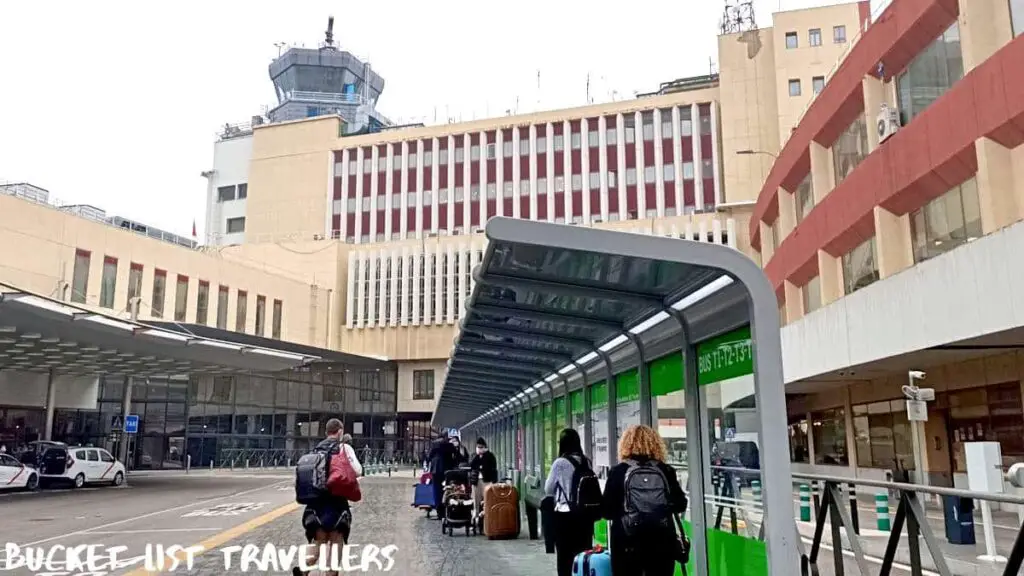
The nearest airport to Madrid Spain is Adolfo Suárez Madrid–Barajas Airport (Airport code MAD). This international airport is 14km (8miles) from the city. Madrid Airport is the busiest airport in Spain. It is also a hub for Iberia as well as Air Europa.
Other nearby airports include:
- Salamanca Airport (Airport code SLM). This airport is 163km (101miles) away.
- Valladolid Airport (Airport code VLL). This airport is 173km (108miles) away.
- Albacete Airport (Airport code ABC). This airport is 227km (141miles) away.
The national airline of Spain is Iberia.

Madrid destination guide: Arriving by boat
Madrid is an inland city and therefore cannot be reached by boat. The Dry Port of Madrid (also called the Dry Port of Coslada) is less than half an hour drive from Madrid. This dry port connects to the ports of Algeciras, Valencia, Bilbao and Barcelona. However this dry port is for shipping of goods, not people.
Madrid destination guide: How to get around Madrid Spain
Walking in Madrid Spain
By far the easiest and cheapest way to get around Madrid is to walk. Most of the main attractions in the city area are within walking distance.
Local buses in Madrid Spain
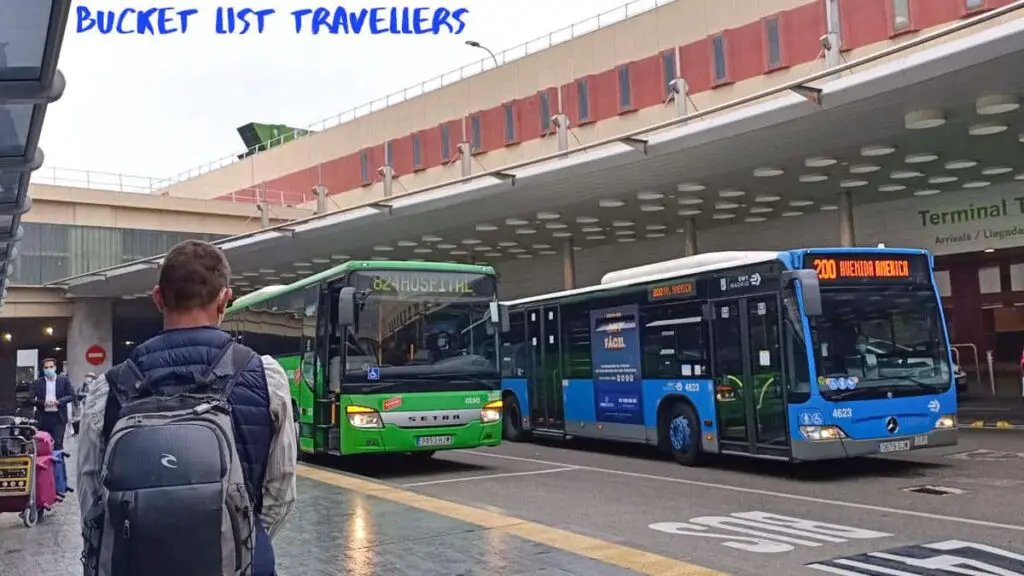
Local buses service Madrid. Madrid’s bus network covers over 200 bus lines. Three free bus routes operate in Madrid:
- 001 Atocha Renfe-Moncloa
- 002 Puerta de Toledo-Argüelles
- C03 Puerta de Toledo-Argüelles
Buses run from 6am-11:30pm on weekdays. On weekends and public holidays, buses run from 7am-11am with slightly less frequent services. At night there is the night bus service (called búhos, or owls in Spanish). There are 27 different night bus routes, which all operate from Plaza de Cibeles.
Madrid’s bus services are run by EMT (the Municipal Transport Company).
For more information, see this website: https://www.esmadrid.com/en/getting-around-madrid-by-bus
Local trains in Madrid Spain
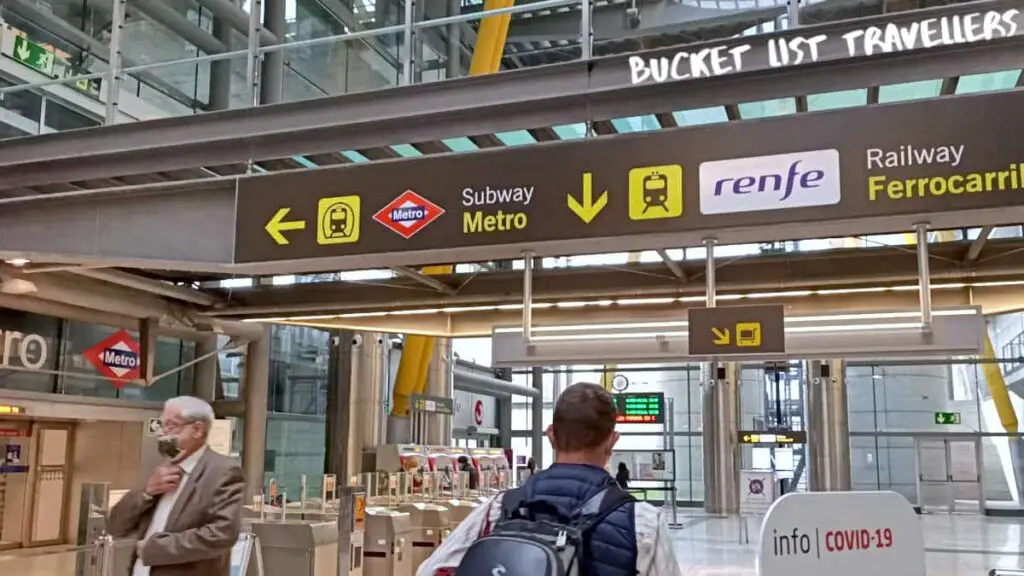
Cercanías Madrid trains are Madrid’s local commuter rail service. It services Madrid and also connects Madrid and its metropolitan area.
Renfe Operadora is the railway company that operates these services.
Madrid Sightseeing Bus
An easy way to see Madrid is with a Madrid City Tour. There are a number of different tour companies in Madrid offering Hop On Hop Off sightseeing buses as well as Madrid City Bus Tours. There are a number of different routes available and a one day adult ticket costs around 25 euro (price as at 2024).
Tourist train rides from Madrid Spain
There are a number of scenic tourist train rides that depart from Madrid Spain:
- Cervantes Train – this goes to Alcalá de Henares, the birthplace of famous Spanish writer Miguel de Cervantes.
- The Strawberry Train – a period train that runs from Madrid to Aranjuez.
- The Phillip II Train – a vintage train that runs from Madrid to San Lorenzo de El Escorial.
- Medieval Train to Sigüenza – a vintage train to the historic town of Sigüenza.
- Arganda Train – a vintage steam locomotive train that travels through southeast Madrid.
- Wine Train (Valladolid)
- Zorrilla Train
- Tren de los Molinos
- Tren Teresa de Ávila
- Canal de Castilla Train
- Antonio Machado Train
Trams in Madrid Spain
The Madrid tramway consists of 3 tramlines operated by Metro Ligero de Madrid. Additionally there is the Parla Tram, which is a circular line in the suburb of Parla in the south of Madrid.
Metro trains (subway or underground) in Madrid Spain
Madrid has the second largest metro train system in Europe. The metro network has 12 metro lines and over 300 stations. It runs from 6am-1:30am, with reduced services on weekends.
Vehicle hire in Madrid Spain
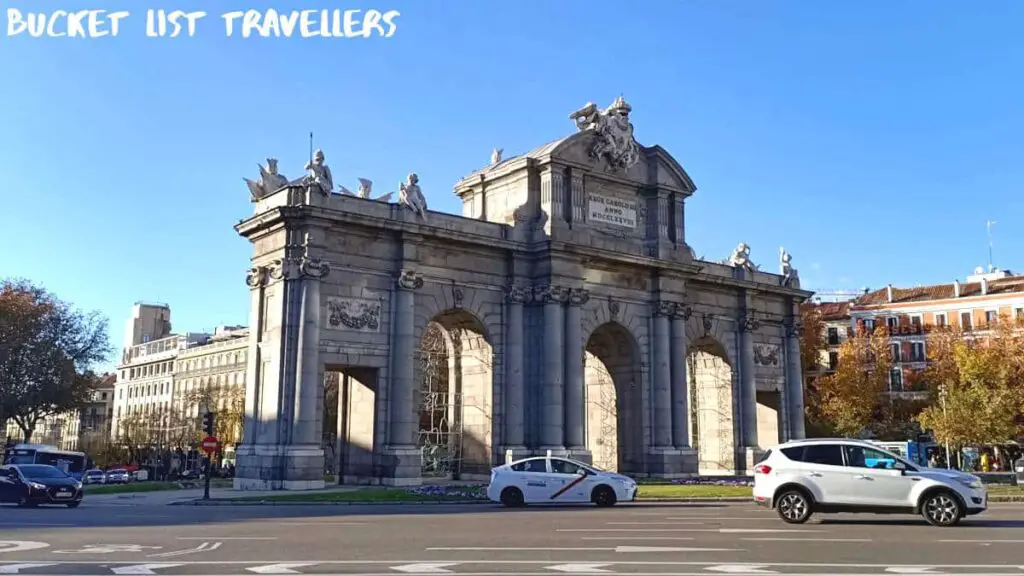
A wide variety of vehicles can be rented in Spain. This includes:
- Bicycles – BiciMAD is Madrid’s public bike rental service. Alternatively you can hire a bike from a bike hire shop such as Rent & Roll Madrid.
- Electric scooters
- Motorcycles
- Cars
- SUVs
- Campervans
- Boats
In Spain they drive on the right side of the road.
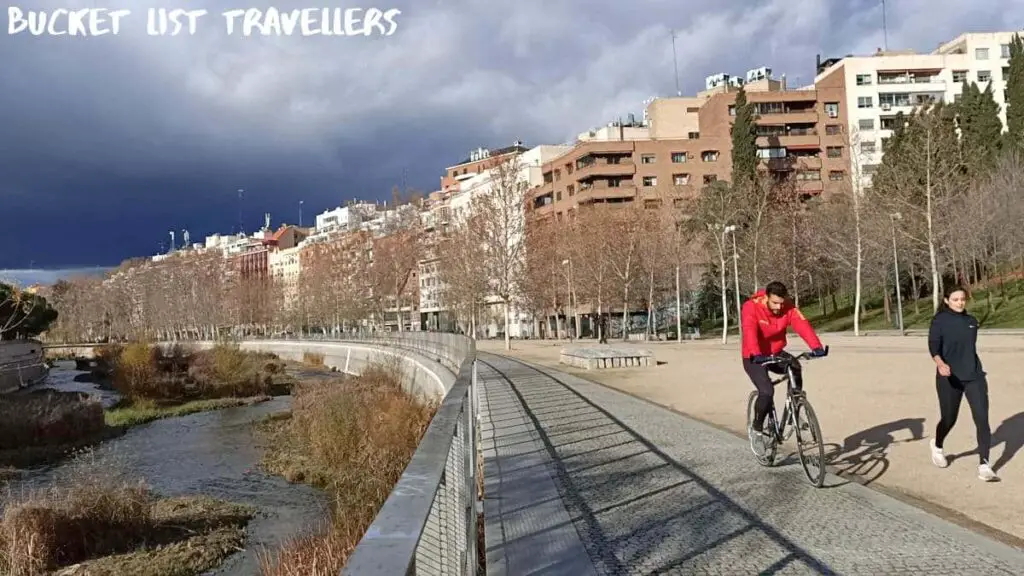
Shuttles in Madrid Spain
Airport shuttles operate in Madrid. These are regular express buses that connect the city of Madrid to terminals 1, 2 and 4 or Madrid Airport. The bus runs at all hours and every day of the year. It makes 3 stops in the city – next to O’Donnell metro station, Plaza de Cibeles and next to Atocha train station (only during the day). Tickets cost 5 euro per person one way (as at 2024) and are sold onboard the bus.
Taxis in Spain
Taxis are common in Spain. Fares are regulated and are usually metered. The exception to this will be standard journeys such as airport trips in some cities. In this case the fare will be a fixed price. However in general your fare will include the following costs:
- The pickup fee or minimum fee – this is charged as soon as you get into the vehicle
- Price per kilometre – this price can vary depending on the time of day
- Price per hour – this is a price that gets charged when the taxi is stuck in heavy traffic. The price also varies depending on the time of day
- There may also be an additional fee for certain days (e.g. Christmas and New Year) or for luggage
However in for some trips such as from the airport to the city centre fares may be a fixed price that is agreed on before the trip.
It is not necessary to tip taxi drivers in Spain. At most, locals may round up the fare to the nearest dollar as a tip.
Tuk Tuks in Madrid Spain
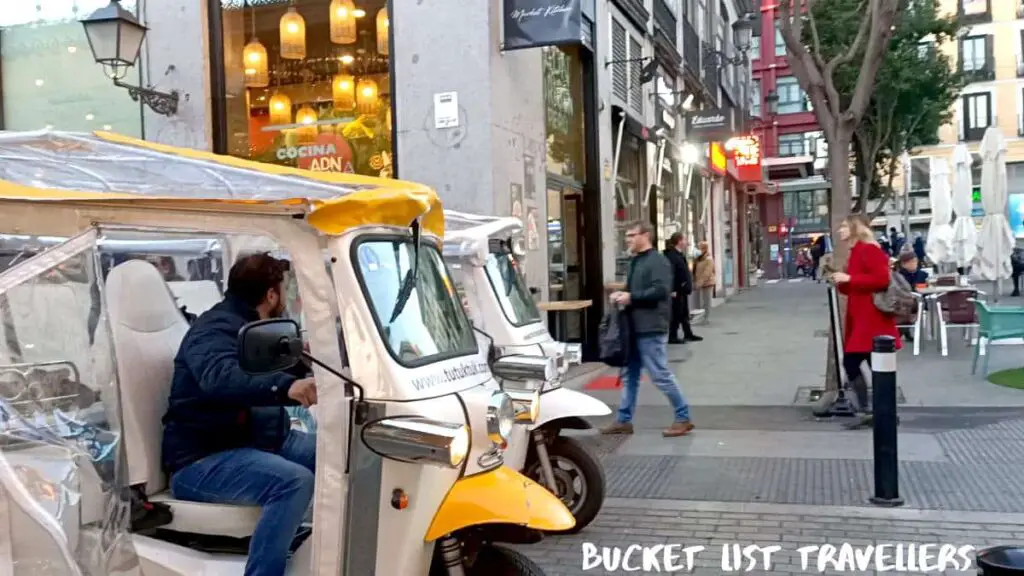
A fun and environmentally friendly way to get around Madrid is by tuk tuk. Electric tuk tuk tour companies operate in the city and provide private sightseeing tours around Madrid.
Ride-share services in Spain
There are a number of ride-share services that operate in Spain. These include Uber, Cabify, FREE NOW and CarpoolWorld.
Madrid destination guide: Is Madrid worth visiting?
Madrid is a vibrant city that offers something for everyone. It is a must-visit destination in Spain and has a phenomenal food scene with an abundance of cafes and restaurants serving mouth-watering dishes like croquetas and calamari sandwiches. The city is perfect for sightseeing as it is filled with architectural delights like Palacio de Cristal and Temple of Debod as well as bustling squares like Plaza Mayor and grand streets like Gran Via. Madrid is also a cultural centre, with many art galleries and museums spread across the city. With its lively atmosphere, rich history, and beautiful architecture, Madrid is definitely worth visiting.
Madrid destination guide: How long to spend in Madrid Spain
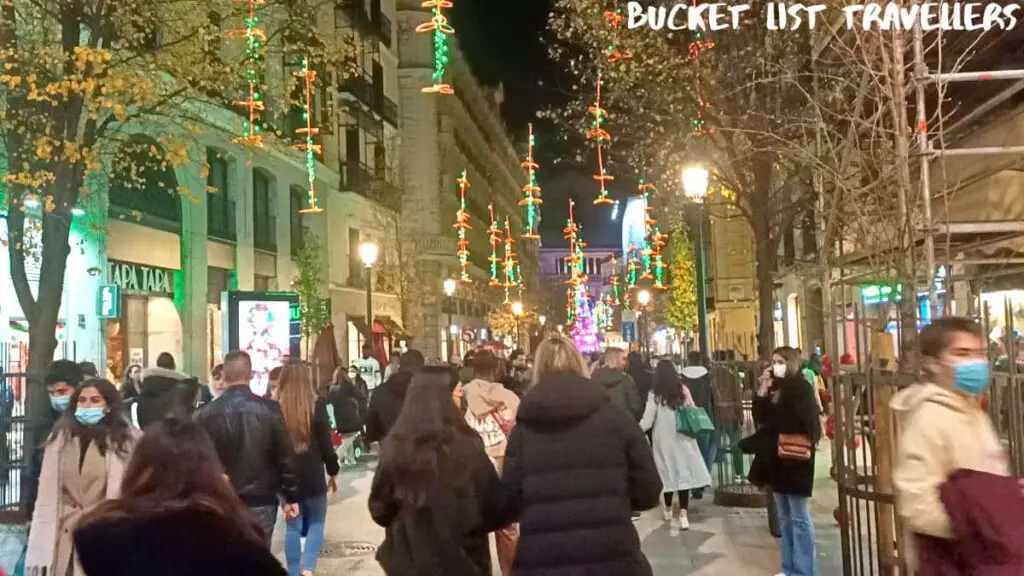
Madrid is a great place to come for a long weekend or even a week. It is a vibrant city that always has something going on. And just the food alone is reason enough to pay Madrid a visit! We spent one week in Madrid and enjoyed taking time to enjoy the various activities available in this beautiful city.
Madrid destination guide: What to do in Madrid Spain
Madrid is a lively Spanish city with many activities on offer. It has a range of great free activities as well as paid activities.
Madrid destination guide: Free things to do in Madrid Spain
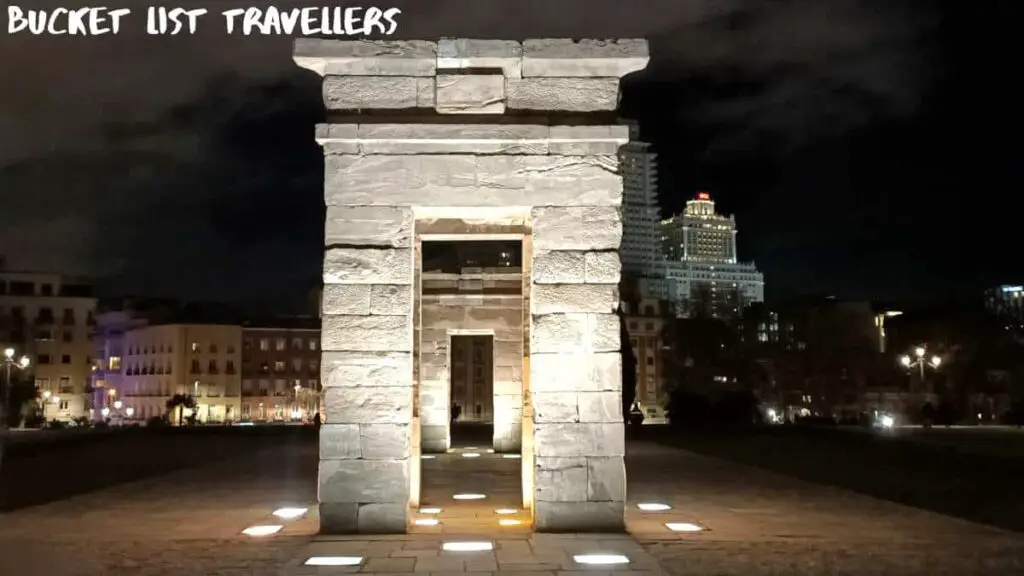
There are enough free activities in Madrid Spain to keep you entertained for a weekend or even a leisurely week:
- Prado Museum – free entry Monday-Saturday 6-8pm, Sundays and Public holidays 5-7pm
- El Retiro Park
- Museo Nacional Centro de Arte Reina Sofía – free entry Monday 7-9pm, Wednesday-Saturday 7-9pm, Sunday 12:30-2:30pm, April 18, May 18, October 12
- Gran Via
- Plaza Mayor
- Museo Arqueológico Nacional – free entry Saturday from 2pm, Sunday mornings, April 18, May 18, October 12, December 6
- Barrio de Salamanca
- La Latina
- Mercado San Miguel
- Parque Madrid Río
- Palacio de Cristal
- Parque de El Capricho
- Malasaña
- Puerta del Sol
- Museo Cerralbo – free entry Saturday from 2pm, Thursday 5-8pm, Sundays, May 18, October 12, Nov 16, December 6
- Palacio de Cibeles
- Museo Taurino de Madrid
- Barrio de Las Letras
- Real Basílica de San Francisco el Grande – free entry on weekends, Thursdays as well as during mass
- Catedral de Santa María la Real de la Almudena – requested donation: 1 euro
- Templo de Debod
- Paseo del Prado
- Naval Museum – a donation of 3 euro is requested
- Plaza de Santa Ana
- Museo Lázaro Galdiano – free entry from 2-3pm
- Estacion de Atocha
- Plaza de Oriente
- Casa de Campo
- Edificio Metrópolis
- Puerta de Alcala
- Primark
- Dam of El Prado
- Mercado San Antón
- Museo del Romanticismo – free entry Saturday from 2pm, Sundays, May 18, October 12, November 16, December 6
- Mercado de la Paz
- Jardines de Sabatini
- Casa-Museo de Lope de Vega – advance booking required
For more details, see our Athens travel guide on the 20 Best Free Things To Do in Madrid Spain.
Madrid destination guide: Paid activities in Madrid Spain
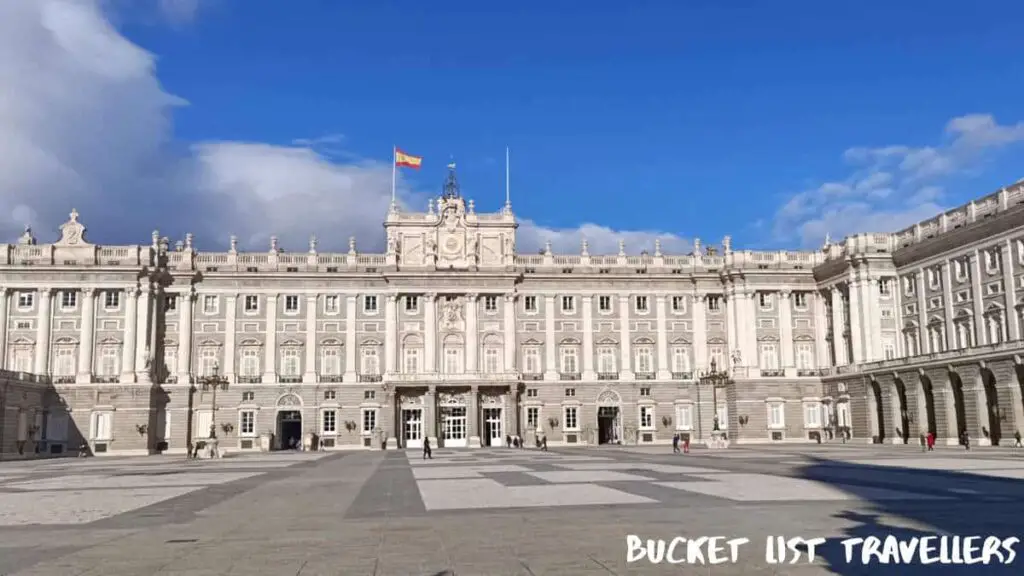
A number of attractions in Madrid Spain charge an entry fee:
- Santiago Bernabéu Stadium – entry fee is 25 euro for adults (as at 2024)
- Royal Palace of Madrid – entry fee from 14.90 euro for adults (as at 2024)
- Museo Nacional Thyssen-Bornemisza – entry fee is 13 euro for adults (as at 2024)
- Museo Sorolla – entry fee is 3 euro for adults (as at 2024)
- Caixa Forum – entry fee is 6 euro for adults or 5.70 euro online (as at 2024)
- Estadio Cívitas Metropolitano – entry fee is 16 euro for adults (as at 2024)
- Iglesia de San Antonio de los Alemanes – entry fee is 5 for adults (as at 2024)
However many of these attractions have free entry with the Madrid Card. See the Madrid Card section below for more information.
Madrid Card
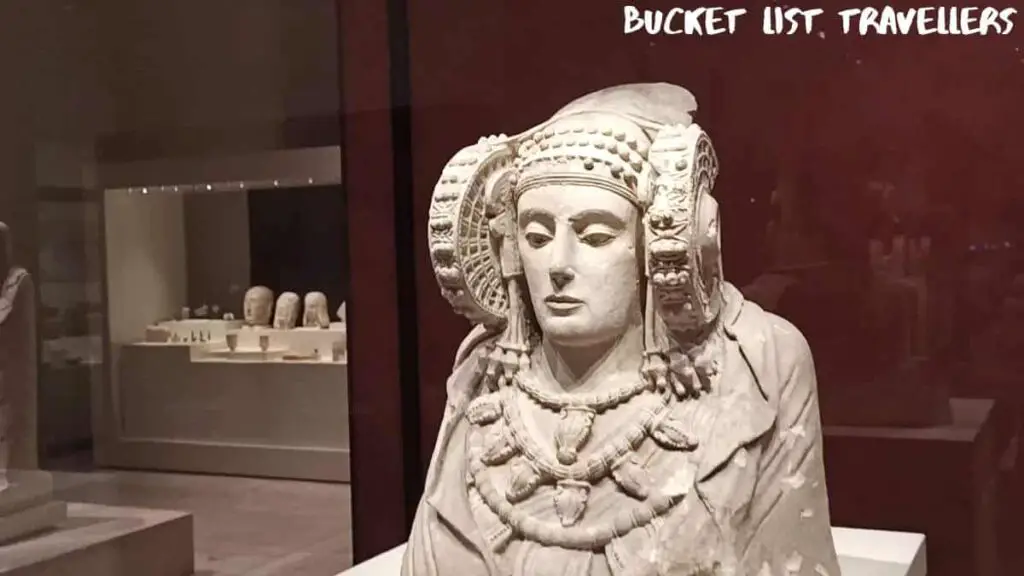
The Madrid Card is a city card that provides benefits and discounts to help you to explore Madrid’s best attractions. Additionally you can use Madrid’s public transport for free. There are 1, 2, 3, 4 or 5 day passes are available. It is available online and pick it up at Adolfo Suarez Madrid-Barajas Airport or you can purchase it in person from a number of locations throughout the city.
The prices for adults for the Madrid Card are as follows (prices as at 2024):
- 1 day Madrid City Card – 10 euro
- 2 day Madrid City Card – 17 euro
- 3 day Madrid City Card – 22.50 euro
- 4 day Madrid City Card – 27 euro
- 5 day Madrid City Card – 32.50 euro
Other Madrid museum passes
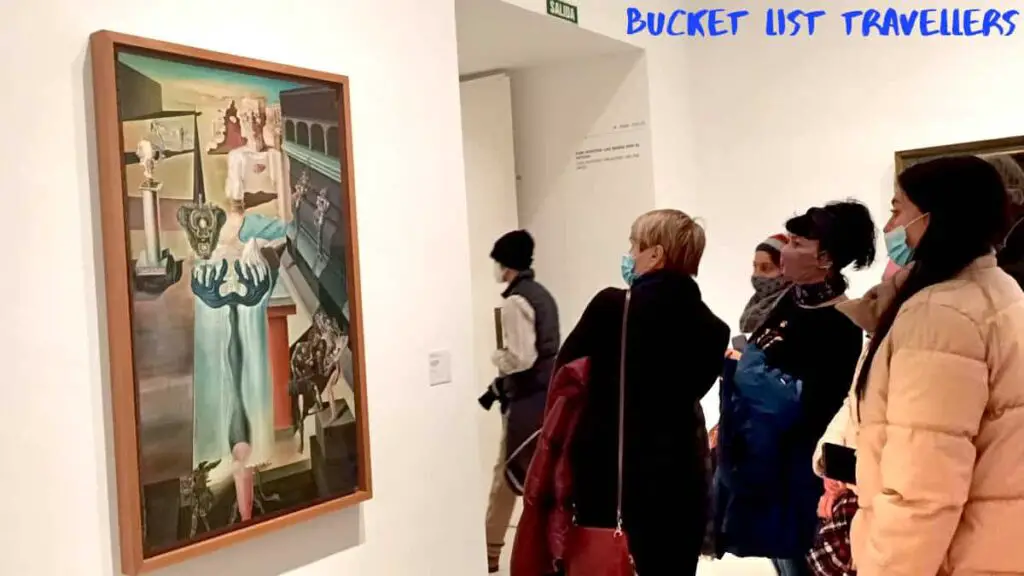
There are a number of different passes which give access to certain museums for a certain time-frame. These include:
- Paseo del Arte Pass – this pass allows one visit each of the Prado, the Thyssen-Bornemisza and the Reina Sofía. Valid for one year from the first visit. The cost of the pass is 32 euro (as at 2024).
- Annual State Museums Pass – this pass allows unlimited entry to the following museums: Museum of Romanticism, National Museum of Anthropology, National Museum of Decorative Arts, Garment Museum, Cerralbo Museum, Museum of the Americas, National Archaeological Museum, Sorolla Museum, Prado Museum and the Reina Sofía Museum. Valid for one year from purchase. The cost of the pass is 36.06 euro (as at 2024).
- Eight Madrid Museums Pass – this pass allows unlimited entry to the following museums: Museum of Romanticism, National Museum of Anthropology, National Museum of Decorative Arts, Garment Museum, Cerralbo Museum, Museum of the Americas, National Archaeological Museum and the Sorolla Museum. Valid for 15 days. The cost of the pass is 16 euro (as at 2024).
- Four Madrid Museums Pass – this pass allows unlimited entry to any four of the following museums: Museum of Romanticism, National Museum of Anthropology, National Museum of Decorative Arts, Garment Museum, Cerralbo Museum, Museum of the Americas, National Archaeological Museum and the Sorolla Museum. Valid for 10 days. The cost of the pass is 8 euro (as at 2024).
- Five Museums. Another Madrid pass – this pass allows entry to the following five house museums: Sorolla Museum, Cerralbo Museum, Lázaro Galdiano Museum, National Museum of Decorative Arts, and the Museum of Romanticism. Valid for 10 days. The cost of the pass is 12 euro (as at 2024).
Weather in Madrid Spain

Madrid’s climate is a combination of both a Mediterranean climate and cold semi-arid climate, characterised by hot summers and relatively cool winters, with snow not uncommon. It has cold winters, with average temperatures ranging between 1°C and 10°C (33°F and 51°F) in the coldest month of January. Summers last from June to September and are hot and sunny, with the average temperature range between 17°C and 33°C (63°F and 91°F) in the hottest month of August. The month with the most rainfall is November with 6.9 days of rain on average and the driest month is May with an average of 6.6 rainy days.
Best time to visit Madrid Spain
Madrid is a city that is always buzzing with activities to do and places to see. The peak tourist season will be June through July, as well as the Christmas period in December. Expect to be jostling the crowds and putting up with high prices during these times. Summer in Madrid is particularly oppressive, with temperatures exceeding 40°C an increasingly regular occurrence. For much milder temperatures, less crowds and lower prices we recommend the best time to visit Madrid are the shoulder seasons of April-May and September-October.
Internet and mobile phones in Spain
Since June 15th, 2017, Roam Like at Home (RLAT) rules came into force for European Union countries. As such, people with European Union mobile numbers are no longer charged temporary mobile roaming fees if they travel within the European Union. This means that if you have a European Union mobile number, you can use that number anywhere within the European Union and you will be charged for calls, texts and data in the same rates as if you were in your home country. There are limits to this in order to prevent abuse of these rules.
The main internet and phone companies in Spain include Movistar, Orange, Vodafone and Yoigo.
5G has been in Spain since June 2021. However 2G is expected to continue in Spain until 2030 and 3G until 2025.
Spain is ranked 60th fastest in the world for mobile internet speeds and 11th fastest for fixed broadband. For Fixed Broadband the average download speed is 218mbps and upload is 158mbps (as at April 2024).
Cell phone SIM cards can be bought in many places throughout Spain. These include phone storess, at airports as well as online. You need to show your passport, visa and a passport photo to get a SIM card.
How much to budget for Madrid Spain?
Is Madrid expensive?
Madrid is more expensive than other Spanish cities, but it is still a relatively affordable city to visit by European standards. There are plenty of budget-friendly accommodation options available and it is possible to visit the city very cheaply. This is aided by the fact that the city is very walkable and there are plenty of free or cheap activities available. Additionally, there are plenty of great bargains to be had at restaurants like 100 Montaditos.
Madrid destination guide: Daily spend for a couple travelling in Madrid Spain
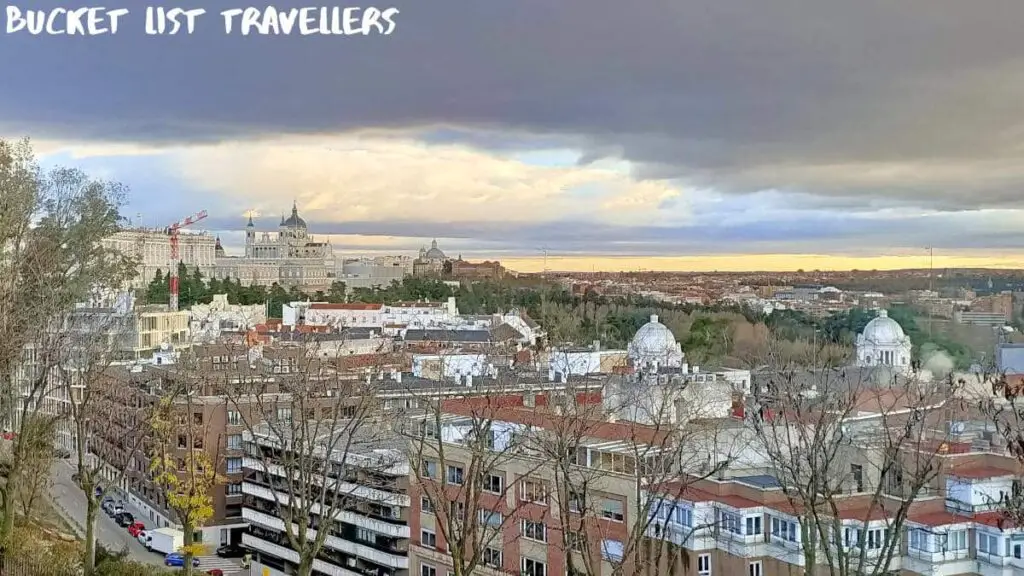
As a rough guide, we recommend the following budgets for a couple:
- Low-budget daily spend – 100 euro per day for a couple will get you budget accommodation, self catering and bakery meals, walking or catching local transport to get around the city and free or cheap activities.
- Mid-range daily spend – 300 euro per day for a couple will get you mid-range accommodation, walking or catching local transport to get around the city, dining at reasonably priced cafes and restaurants and some paid activities.
- Luxury spend – 1000 euro per day for a couple will get you a premium experience, staying at high end hotels, travelling by private transport, doing a range paid activities and eating at high end restaurants.
Madrid destination guide: Accommodation in Madrid Spain
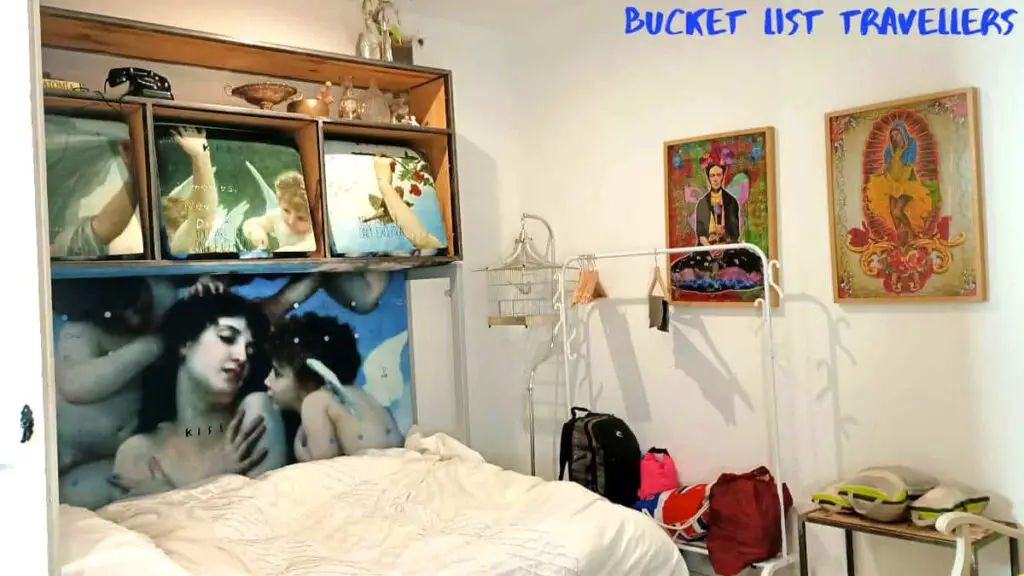
There is a good range of accommodation to suit most budgets in Madrid Spain. Airbnb operates in Spain and we were impressed with the range of options available in Madrid.
Where to stay in Madrid Spain
We recommend the following accommodation in Madrid:
- Best hostel in Madrid – Onefam Sungate by Hostel One is a social hostel with a great atmosphere. There’s always plenty of activities to get involved in. It’s centrally located and the place is clean and well-organised. The staff are super friendly and provide excellent service. They also have free churros in the morning and free tapas on some nights.
- Best budget hotel in Madrid – UVE Marcenado provides clean and modern rooms in a quiet and safe area. They have large and comfortable beds and a nice view from the balcony. The metro station is close and there are plenty of shops and restaurants nearby. The staff are friendly and attentive and the breakfasts are very nice at a reasonable price.
- Best mid-range hotel in Madrid – CoolRooms Palacio de Atocha is a stylish and elegant hotel with phenomenal staff. The rooms are beautifully appointed with extremely comfortable beds. The bathrooms are spacious with high quality finishes. Additionally, their breakfasts are amazing. There is a lovely pool area with comfortable sofas and sun loungers to relax on. It is also conveniently located within walking distance of many of Madrid’s best attractions.
- Best luxury hotel in Madrid – Four Seasons Hotel Madrid is a luxurious 5-star hotel located in the heart of Madrid. The hotel offers a stunning view of the city from its rooftop terrace, where you can enjoy a delicious breakfast while admiring the beautiful cityscape . The rooms are spacious, fresh, and well-equipped with modern amenities to ensure a comfortable stay. Additionally, the staff at the hotel are extremely accommodating and kind, providing excellent service to guests. Overall, the Four Seasons Hotel Madrid is an excellent choice for those looking for a luxurious stay in Madrid.
How much is accommodation in Madrid Spain?
For short-term accommodation, a general price per night is as follows:
- Budget accommodation – 12-58 euro for a bed in a dorm
- Mid-range accommodation – 55-200 euro for a private room
- Luxury accommodation – 155-2400 euro a night for a luxury hotel
- Rental property – 160-800 euro a night for a fully furnished 3-5 bedroom home
Madrid destination guide: Food in Madrid Spain
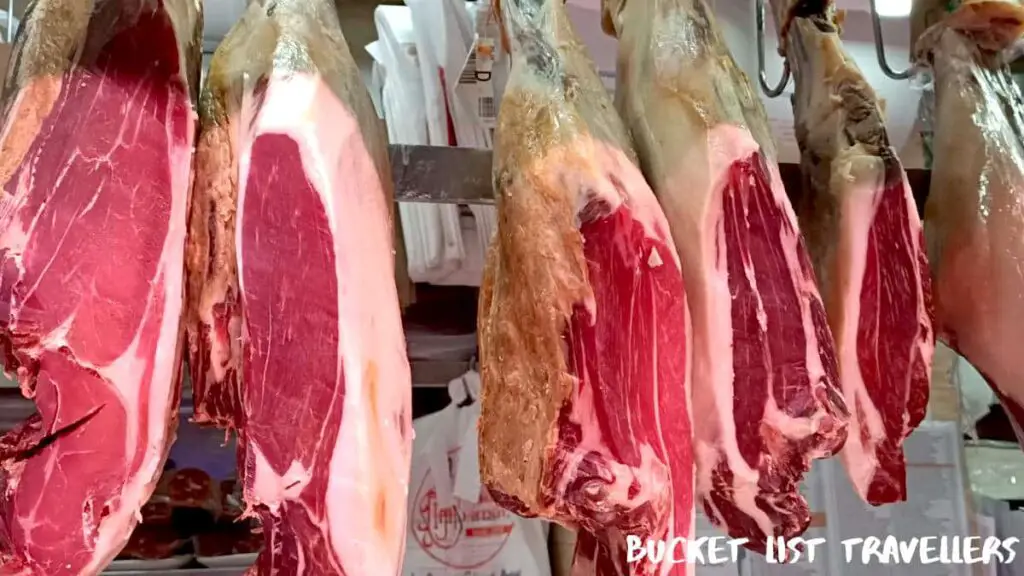
Madrid is a food lover’s paradise. The city is filled with a wide variety of restaurants, cafes and eateries to cater to every taste and budget. As the capital of Spain, food from all regions of the country can be found in this city along with dishes that are native to Madrid. All types of international cuisine are also available in the city. Furthermore we found the prices for eating out were quite reasonable.
How much does food cost in Madrid Spain?
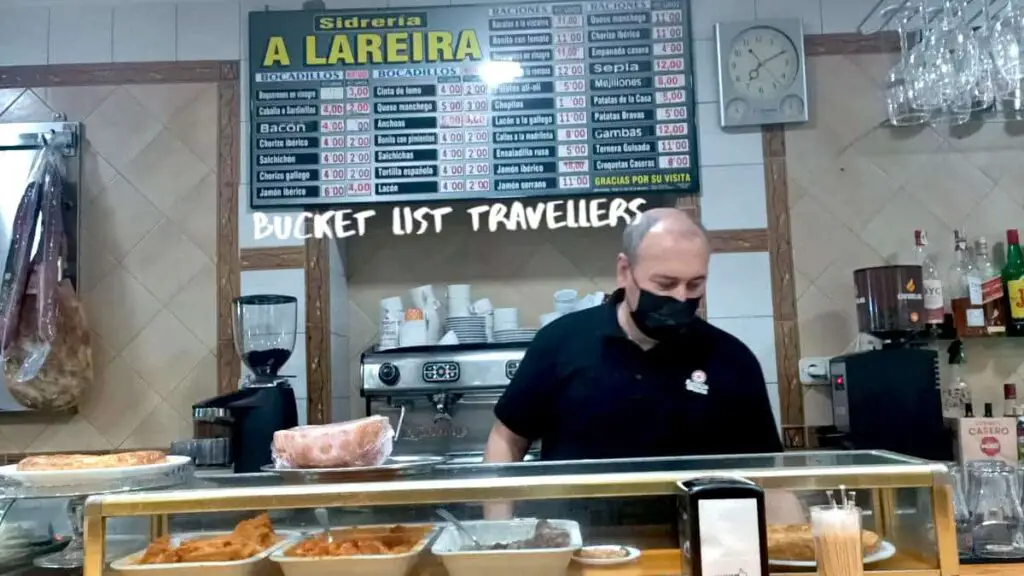
Our price guide for your food budget in Madrid Spain is as follows (prices as at 2022):
- Restaurant meal – 8-15 euro for a main dish
- Fast food – 7-9 euro for a meal
- Bakery food – 1.5-2 euro for an empanadilla or loaf of bread
- Beer – 2-3 euro
- Coffee – 1-2 euro
Tap water at restaurants in Spain
Restaurants in Spain cannot refuse to serve tap water to their customers, even if they think the tap water doesn’t taste good. They also cannot charge the customer for tap water.
Cover charge for restaurants in Spain
Restaurants in Spain generally don’t charge a fixed per person charge for things like table linen and tableware. Bread and olives are often brought to your table, but you can only be charged for this if it is requested and the price is indicted. If in doubt, ask your server.
Service charge for restaurants in Spain
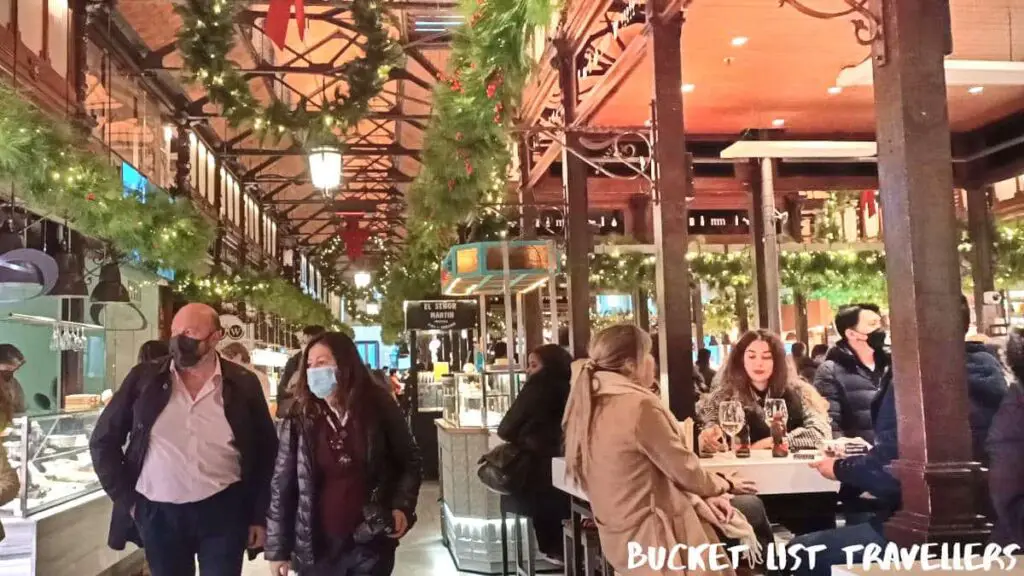
Restaurants in Spain generally do not charge service charges. If they do, you will find the words “servicio incluido” written on the bill. Conversely “servico non incluido” means a service charge is not included in the bill. Tipping is not compulsory nor expected in Spain. When Spaniards tips, its generally only one or two euro.
Terrace surcharge for restaurants in Spain
Some restaurants in Spain charge a higher price to sit outside on the terrace area compared to inside the restaurant. This terrace surcharge will be clearly listed on the menu either as a per person charge, a percentage surcharge or as separate prices for the terrace and indoor areas.
IVA tax for restaurants in Spain
You may find an IVA charge added to your bill. This is a value added tax and is currently 10%. This is generally charged for more upmarket restaurants, and the IVA needs to be clearly stated on the menu.
Regional dishes in Madrid Spain

- Croquetas
- Huevos rotos (broken eggs)
- Bocadillo de calamares (squid sandwich)
- Churros con chocolate and porras
- Tortilla de patatas
- Gambas al ajillo (garlic shrimp)
- Pisto manchego
- Cocido madrileño (Madrilenian Stew)
- Callos a la Madrileña (Madrilenian tripe stew)
- Oreja a la plancha (grilled pig’s ear)
Cheap Eats in Madrid Spain
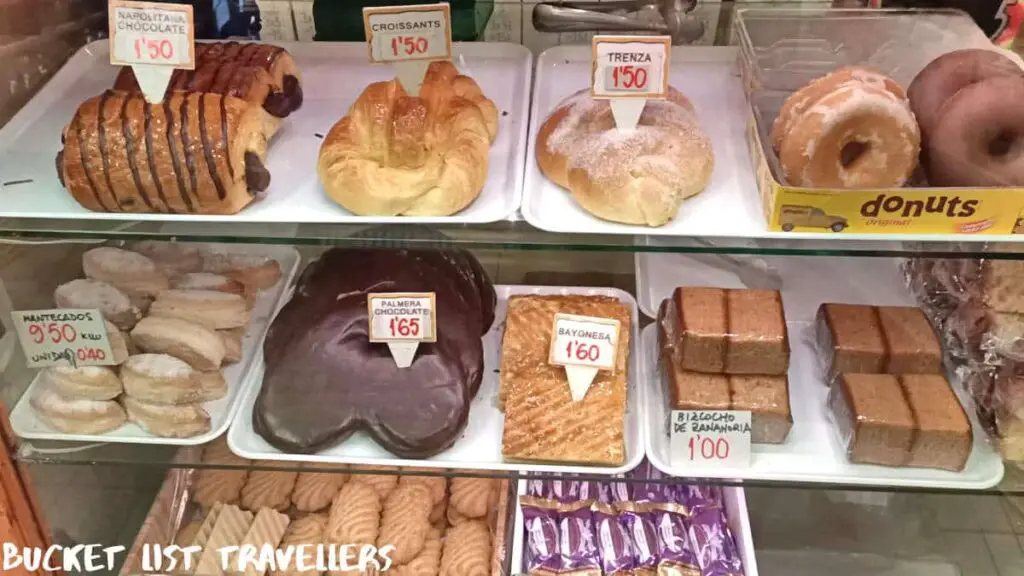
- The restaurant chain 100 Montaditos is our favourite cheap eat in Spain. It is a tapas restaurant that has an extensive menu at affordable prices. On Wednesdays and Sundays they have specials where many of their tapas items are only 1 or 2 euro each.
- Bakeries are a great place to get cheap and delicious food. Empanadillas (small empanadas) are typically around 1.50-2 euro.
- Local markets are often a great place to get a cheap meal in Spain. We also enjoy the vibrant atmosphere or local markets.
Fine dining in Madrid Spain
Madrid is home to a number of Michelin Guide restaurants.
3 star Michelin restaurants in Madrid Spain (2024):
- DiverXO
2 star Michelin restaurants in Madrid Spain (2024):
- Paco Roncero
- Deessa
- DSTAgE
- Coque
- Ramón Freixa Madrid
- Smoked Room
1 star Michelin restaurants in Madrid Spain (2024):
- CEBO
- Yugo the Bunker
- Corral de la Morería Gastronómico
- Toki
- El Club Allard
- Saddle
- Ricardo Sanz Wellington
- Quimbaya
- Santerra
- A’Barra
- OSA
- El Invernadero
- La Tasquería
- Clos Madrid
- RavioXO
- Desde 1911
- Gaytán
- Zuara Sushi
- Ugo Chan
Michelin Bib Gourmand restaurants in Madrid Spain (2024):
- Vinoteca Moratín
- Noi
- Bolívar
- Taberna Úbeda
- Tepic
- Sisapo
- Bacira
- La Montería
- Taberna Recreo
- Las Tortillas de Gabino
- Treze
- Tres por Cuatro
- Gala
- Bichopalo
- La MaMá
- La Maruca – Castellana
- Quinqué
Michelin Plate restaurants in Madrid Spain (2024):
- Isa
- Ticuí
- Umiko
- Casa Mortero
- Baoli
- The Omar
- Kyoshi Las Cortes
- Gofio
- Estimar Madrid
- Arallo Taberna
- Ferretería
- Triciclo
- Nunuka
- Chispa Bistró
- Sua
- La Tasquita de Enfrente
- Doppelgänger Bar
- Kuoco
- Palm Court
- Gioia
- Mar Mía
- Xeito! 19′ 20”
- Tampu
- Dos Cielos Madrid
- Le Bistroman Atelier
- Comparte Bistró
- Alabaster
- Trèsde
- Los 33
- Barracuda MX
- La Llorería
- Ikigai Flor Baja
- Taberna Pedraza
- Mudrá
- Lamian
- El Señor Martín
- Marmitón
- Fismuler
- Benares
- Fayer
- La Bien Aparecida
- Playing Solo
- Barra Alta Madrid
- Kabuki Madrid
- Garelos
- Coquetto
- Hotaru Madrid
- Shinatora Ya
- L’Atelier Robuchon
- Puntarena
- Cadaqués
- Asiakō
- Arzábal
- China Crown
- Amós
- Lúa
- La Maruca – Velázquez
- Sushi Bar Tottori
- El Pedrusco de Aldealcorvo
- Tora
- Alcotán
- Marcano
- ABYA
- O’Grelo
- Omeraki
- Poncio WM
- Amparito Roca
- Soy Kitchen
- Izariya
- Harambourne
- Bistronómika
- NoDrama Concept
- BiBo Madrid
- TA-KUMI
- Bugao Madrid
- Leña Madrid
- Adaly
- Zalacaín
- Surtopía
- Seeds
- Lakasa
- Pilar Akaneya
- Tori-Key
- Èter
- Lana
- Ikigai Velázquez
- La Maruca – López de Hoyos
- Nantes
- Tramo
- Ovillo
- La Tajada
- VelascoAbellà
- Rocacho
- 99 sushi bar
- Rubaiyat Madrid
- Fonda de la Confianza
- La Guisandera de Piñera
- La Morena
- Jaizkibel
- Filandón
Madrid Spain culture
Madrid public holidays
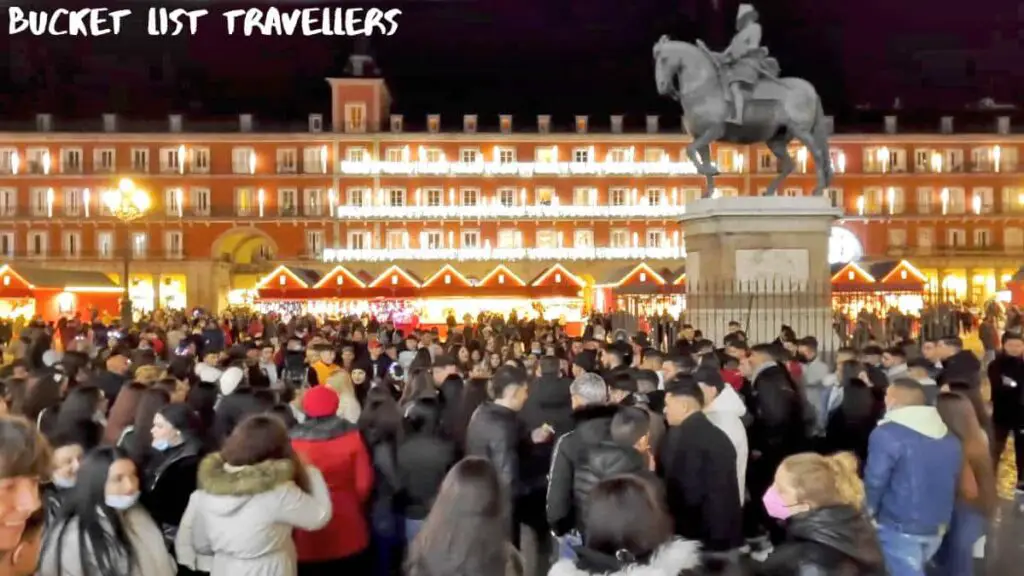
- New Year’s Day – 1 January
- Epiphany – 6 January
- St Joseph’s Day – 19th March
- Holiday Thursday – the Thursday before Easter Sunday, typically in March or April.
- Good Friday – the Friday before Easter Sunday, typically in March or April.
- Labor Day – 1 May
- Community Festival of Madrid – 2 May
- Feast of St Isidro – 15 May
- St James’ Day – 25 July
- Assumption of the Virgin – 15 August
- Hispanic Day – 12 October
- All Saints Day – 1 November
- Our Lady of the Almudena – 9 November
- Constitution Day – 6 December
- Immaculate Conception Day – 8 December
- Christmas Day (Navidad) – 25 December
National symbols of Spain
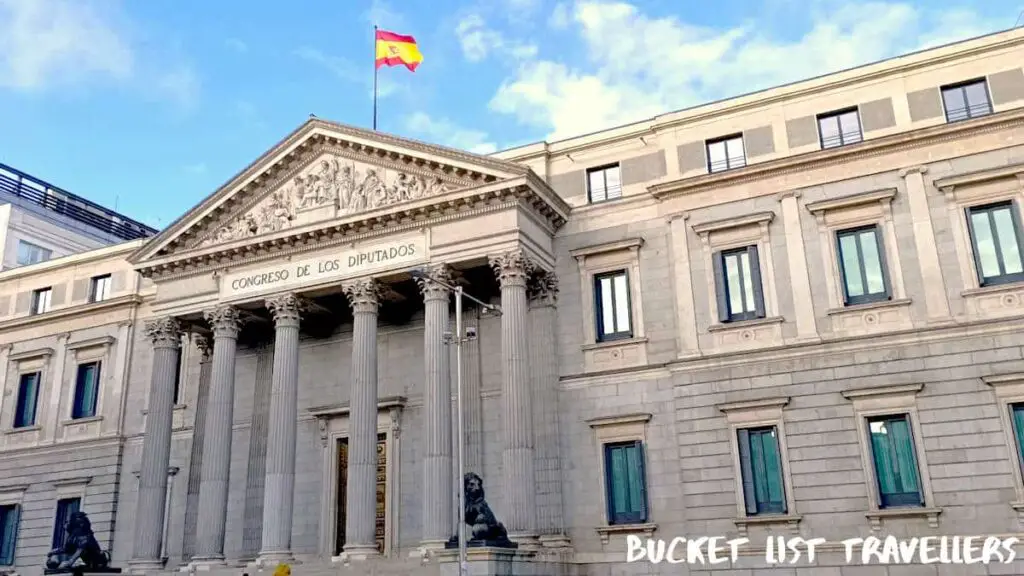
- Spain flag – a flag featuring three horizontal bands coloured red, yellow, red with the Spain coat of arms slightly to the left in the middle band. The yellow band is twice the size of the red bands.
- Spain coat of arms – this features the arms of the Spanish medieval kingdoms, the Royal Crown, the arms of the House of Bourbon, the Pillars of Hercules and the Spanish national motto: “Plus Ultra”.
- National flower – red carnation
- National bird – Spanish imperial eagle
- Spanish national animal – the bull
Spain pastimes
- National dish – paella
- Popular drinks – sangria, wine, beer, horchata, granizados, sherry, rebujito, vermouth, tinto de verano, coffee.
- National sport – football
- Religion – 56% Catholic, 2.8% other faiths such as Islam, Protestant Christian and Buddist (as at 2022)
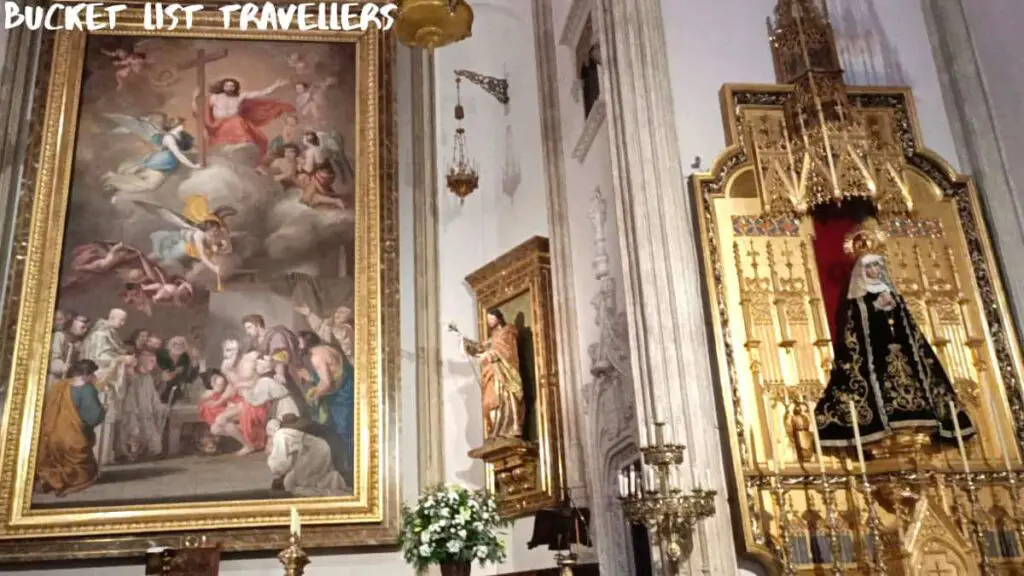
Famous people from Madrid Spain
- Famous people born in Madrid Spain – singer Julio Iglesias, Enrique Iglesias, tenor Plácido Domingo, bull fighter Luis Miguel Dominguín, businessman Rafael del Pino, astronaut Pedro Duque, businesswoman Esther Koplowitz, business magnate Alicia Koplowitz, dramatist Tirso de Molina, playwright Pedro Calderon de la Barca, engineer José Echegaray, dramatist Jacinto Benavente, model Elsa Pataky, King Felipe VI of Spain
- Sports stars from Madrid Spain – paralympic archer Antonio Rebollo, tennis player Manuel Santana, Olympic judoka Begoña Gómez, rally driver Carlos Sainz Sr, basketball player Fernando Martín Espina, Olympic water polo player Pedro García Aguado, Olympic race walker Jesús Ángel García, Olympic volleyball player Rafael Pascual, football player Raúl González, Olympic gymnast Estela Giménez, golfer Gonzalo Fernández-Castaño, football player David De Gea, Olympic figure skater Javier Fernández López, football player Koke Resurrección, Formula One racing driver Carlos Sainz Jr
Is Madrid Spain Safe?
Spain travel guide: Safety in Spain
We travelled through Spain for three weeks and found the country to be extremely safe. As with any country, there are good areas and bad areas. Watch out for pickpockets particularly in Barcelona and Madrid as well as other large cities. Be particularly vigilant around tourist areas, in transport and on beaches. Never leave your valuables unattended in a car. Also, make sure no-one is watching whenever you are entering pin codes and never lose sight of your credit card when making a purchase.
Terror attacks have occurred in Spain in the past and still pose a significant risk. The national terrorism alert for Spain is ‘high’ as at 2024. Watch out for any threats and take official warnings seriously.
The Running of the Bulls in Pamplona is a dangerous activity and consequently may not be covered by travel insurance.
Spain travel guide: General safety considerations in Spain
Other general safety considerations for travel in Spain:
- Drinking water – the tap water in Spain is safe to drink almost everywhere in the country. However old pipes may lead to some contamination.
- Mosquitoes – the tiger mosquito has been present in Spain since 2004. This type of mosquito spreads diseases such as Zika, dengue and chikunguya.
- Altitude sickness – Spain has areas of high altitude. This comes with the risk of altitude sickness. If you are planning to visit any high altitude areas in Spain, be sure to allow sufficient time to acclimatise. If you experience any signs of altitude sickness, such as headache, nausea or vomiting, dizziness, tiredness, loss of appetite or shortness of breath, get help immediately.
- Road safety – Spain roads are in excellent condition and very safe. Additionally, its highway network is very extensive. Nevertheless, take care on roads.
- Water safety – if you visit any of the coastal areas or lakes, take care when swimming as currents and waves may be stronger than you expect.
- Earthquakes – Spain experiences earthquake activity. If you experience an earthquake, stay away from glass, windows, outside doors and walls and anything that could fall. If you are inside get under a table, desk or solid furniture and hang onto it. Cover your head and torso to protect from falling objects. If you are outside, stay outside and go to an open area away from buildings.
- Natural disasters – in addition to earthquakes, Spain also experiences volcanic activity, severe storms and forest fires.
- Sun safety – exposure to the sun can have adverse short-term and long-term effects on the skin, eyes and immune system. Sun protection such as sunscreen, a hat and sunglasses is very important to ensure you don’t get burnt.
As with any destination, take all of your normal safety precautions.
Spain Blogs
You can find our Spain travel blogs below.
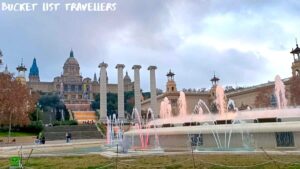
19 Best FREE Things To Do in Barcelona Spain (with map)

17 Best FREE Things To Do in Zaragoza Spain (with map)
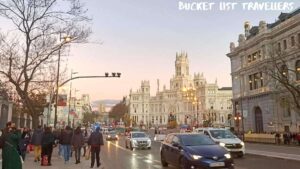
20 Best FREE Things To Do in Madrid Spain (with map)
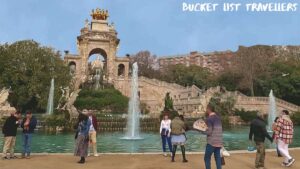
Barcelona Destination Guide (2024): What You Need to Know

Zaragoza Destination Guide (2024): What You Need to Know
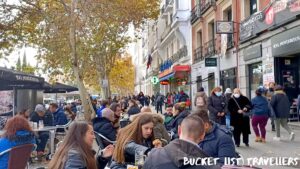
Madrid Destination Guide (2024): What You Need to Know
Affiliate Links
This website contains affiliate links, which means we may earn a commission on any purchases at no additional cost to you. Your support helps us continue our travels and make more travel blogs and travel videos, thank you!
